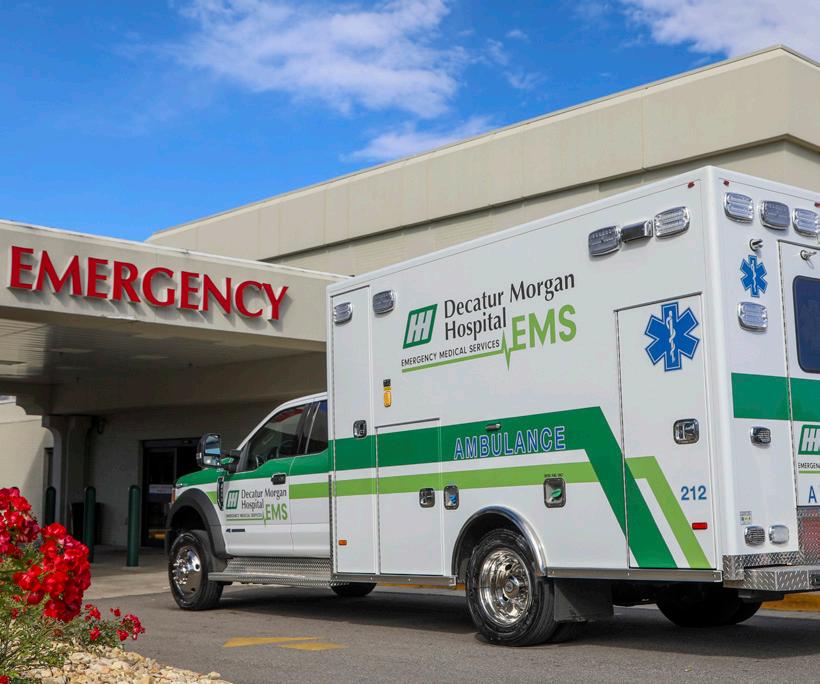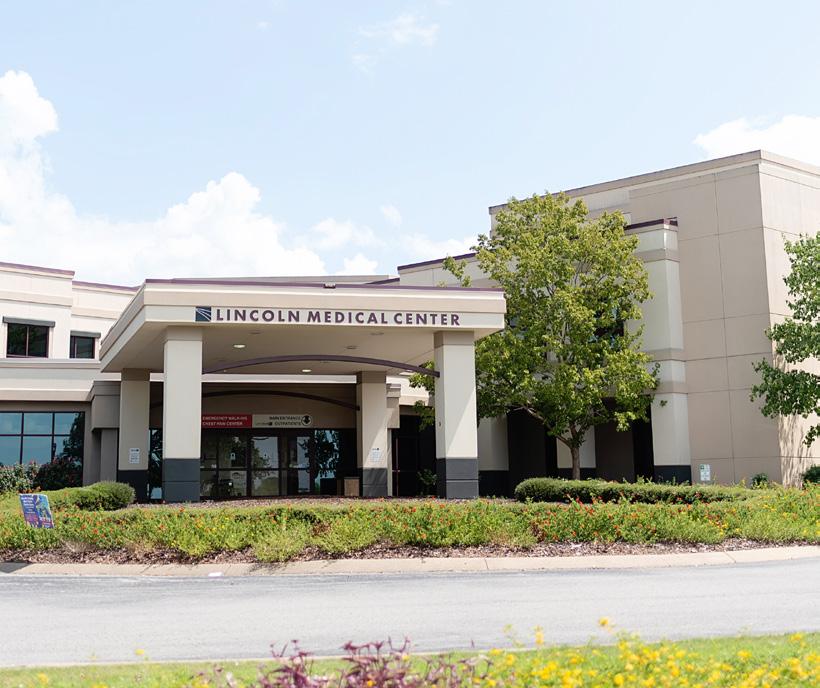
2 minute read
Safety & Quality REPORT
P atient safety is the highest priority in Huntsville Hospital Health System. As we continue our journey to being a highly reliable organization, we are committed to developing a culture that delivers safe care in every patient interaction. By incorporating best practices from health care and other highly reliable industries, we believe that we are taking the right steps in our efforts to provide the quality care that you seek when you are in our facilities. Our pledge remains to Be Safe, Be Caring, Be Kind. The measures below reflect the progress and the challenges that we are making in this journey.
Patient Safety Indicators (PSIs) are a set of measures that provide information on potential hospital complications and adverse events following procedures. The measure shown to the right includes the following PSIs: decubitus ulcer, iatrogenic pneumothorax, postoperative hip fracture, perioperative hemorrhage or hematoma, postoperative acute kidney injury, postoperative respiratory failure rate, perioperative pulmonary embolism or deep vein thrombosis, postoperative sepsis, postoperative wound dehiscence and accidental puncture or laceration. This index value is a ratio of observed to expected events. The goal is to remain below a score of 1.0.
Advertisement
Data source: Hospital Compare www.medicare.gov/hospitalcompare
CHART KEY
HH - Huntsville Hospital
MH - Madison Hospital
DMH - Decatur Morgan Hospital
ALH - Athens-Limestone Hospital
HKH - Helen Keller Hospital
MMC - Marshall Medical Centers
HMC - Highlands Medical Center
LMC - Lincoln Medical Center responding to the challenge together
HCAHPS (Hospital Consumer Assessment of Healthcare Providers and Systems) is a national survey instrument and data collection methodology for measuring patients’ perceptions of their hospital experience. The survey is conducted on behalf of CMS, which oversees Medicare and Medicaid. The “Willingness to Recommend” question measures the percentage of patients who answered “always.”
Data source: Hospital Compare www.medicare.gov/hospitalcompare
*Huntsville Hospital data includes Huntsville Hospital and Huntsville Hospital for Women & Children. Decatur Morgan data includes Decatur and Parkway campuses. Helen Keller data does not include Red Bay Hospital.
30-day mortality rates are the percent of patients who expire within 30 days of being hospitalized. Mortality rates are considered an “outcome of care” measure and show what happened after patients with certain conditions receive care. The rates are “riskadjusted,” meaning the calculations take into consideration the patients’ severity of illness upon admission.
Data source: Hospital Compare www.medicare.gov/hospitalcompare
30-day Readmission Rates
Inpatient Medicare only
30-day Mortality Rates (30 days from admission)
Inpatient Medicare Only | July 2018 - June 2021
Acute Myocardial Infarction (Heart Attack) National Average 12.4%
Heart Failure National Average 11.3%
Pneumonia National Average 16.6%
July 2018 - June 2021 (Heart Failure)
July 2020 - June 2021 (Hospital-wide)
30-day readmission rates are the percent of hospitalized patients who return to the hospital within 30 days of discharge. While some readmissions are appropriate, the measure is intended to highlight readmissions to the hospital that were potentially avoidable. The rates are “risk-adjusted,” meaning the calculations take into consideration the patients’ severity of illness upon admission.
Data source: Hospital Compare www.medicare.gov/hospitalcompare
Heart Failure National Average 21.3%
Hospital Wide National Average 15.0%
Hospital-Acquired infections (HAIs) are infections people get while receiving health care for another condition. HAIs can happen in any health care facility, including hospitals, ambulatory surgical centers, end-stage renal disease facilities, and long-term care facilities. HAIs can be caused by bacteria, fungi, viruses, or other, less common pathogens.
Data source: Hospital Compare www.medicare.gov/hospitalcompare
Hospital-Acquired Infections
July 2021 – June 2022
CLABSI (Central Line-Associated Bloodstream Infection) National Average 0.97
CAUTI (Catheter-Associated Urinary Tract Infection) National Average 0.76
MRSA (Methicillin-Resistant Staphylococcus Aureus) National Average 1.06 C. diff (Clostridium difficile) National Average 0.49
Ratio of the actual observed rate to the predicted rate.





















